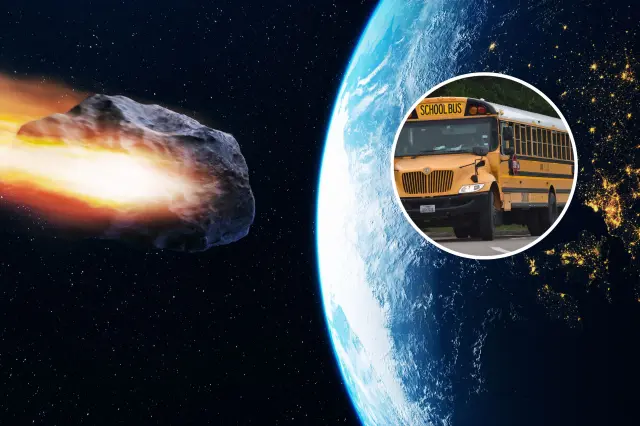-
Bengals’ Ja’Marr Chase Loses Hefty Amount of Money After Jalen Ramsey Incident - 31 mins ago
-
Adams Meets Netanyahu on Day 3 of Israel Trip. Next Stop: Uzbekistan. - 43 mins ago
-
Clippers $30 Million Wing Derrick Jones Jr to Miss Multiple Months - about 1 hour ago
-
Wrongfully convicted man to get $19-million settlement from Baldwin Park - about 1 hour ago
-
Here’s What Trump Should Actually Do for Fertility - about 1 hour ago
-
Older Gen Zers Are Letting AI Pick Their Health Insurance Plan - 2 hours ago
-
Santa Barbara hit hard by storms: record rainfall, flooded streets, moisture from Hawaii - 2 hours ago
-
Why Britain Is Embracing ‘Negative Nation Branding’ - 2 hours ago
-
Warriors Urged to Trade for Mavericks’ Anthony Davis - 2 hours ago
-
Riverside County family says off-duty immigration agent held teenage son at gunpoint - 3 hours ago
NASA Tracking Bus-Sized Asteroid Approaching Earth This Week
NASA is monitoring a bus-sized asteroid that is zipping towards our planet at more than 18,300 miles per hour, according to the Center for Near Earth Object Studies (CNEOS).
The asteroid, known as “2025 VP1”, measures around 37 feet in diameter and is expected to come as close as around 361,000 miles from the Earth on Tuesday, according to NASA’s Jet Propulsion Laboratory (JPL).
2025 VPI is not the only space rock being tracked by NASA this week. The agency is also monitoring “2025 VC4,” another bus-sized asteroid, that’s projected to make its closest approach at around 1.24 million miles from our planet on Tuesday.
And abridge-sized asteroid called “3361 Orpheus (1982 HR)”—measuring around 1,400 feet in diameter—is expected to pass the Earth at around 20,000 miles per hour on Wednesday.

Asteroids are small, rocky masses left over from the formation of the solar system about 4.6 billion years ago. They are found concentrated in the main asteroid belt, which lies around the sun between the orbits of Mars and Jupiter.
The so-called “near-Earth objects” are asteroids whose orbits bring them within 120 million miles of the sun and into the Earth’s “orbital neighborhood.”
“The majority of near-Earth objects have orbits that don’t bring them very close to Earth, and therefore pose no risk of impact,” according to NASA.
A small portion of them, however, known as potentially hazardous asteroids (PHAs), do require closer tracking. Measuring over around 460 feet in size, PHAs have orbits that bring them as close as within 4.6 million miles of the Earth’s orbit around the sun, the space agency says.
Despite the number of PHAs out in our solar system, none are likely to hit Earth any time soon.
“The ‘potentially hazardous’ designation simply means over many centuries and millennia the asteroid’s orbit may evolve into one that has a chance of impacting Earth. We do not assess these long-term, many-century possibilities of impact,” Paul Chodas, manager of the CNEOS, previously told Newsweek.
Do you have a tip on a science story that Newsweek should be covering? Do you have a question about asteroids? Let us know via science@newsweek.com.
Source link



















